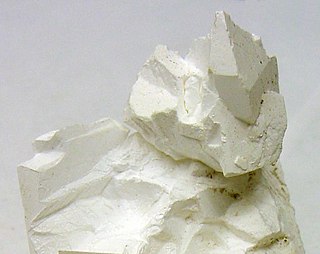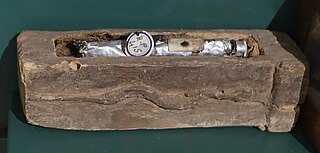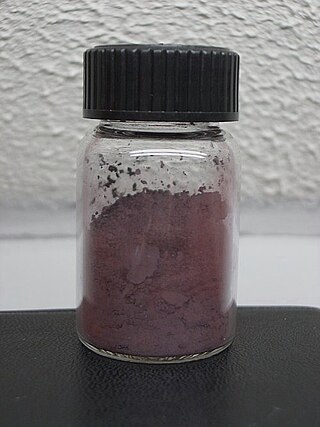
Green is the color between cyan and yellow on the visible spectrum. It is evoked by light which has a dominant wavelength of roughly 495–570 nm. In subtractive color systems, used in painting and color printing, it is created by a combination of yellow and cyan; in the RGB color model, used on television and computer screens, it is one of the additive primary colors, along with red and blue, which are mixed in different combinations to create all other colors. By far the largest contributor to green in nature is chlorophyll, the chemical by which plants photosynthesize and convert sunlight into chemical energy. Many creatures have adapted to their green environments by taking on a green hue themselves as camouflage. Several minerals have a green color, including the emerald, which is colored green by its chromium content.

Yellow is the color between green and orange on the spectrum of light. It is evoked by light with a dominant wavelength of roughly 575–585 nm. It is a primary color in subtractive color systems, used in painting or color printing. In the RGB color model, used to create colors on television and computer screens, yellow is a secondary color made by combining red and green at equal intensity. Carotenoids give the characteristic yellow color to autumn leaves, corn, canaries, daffodils, and lemons, as well as egg yolks, buttercups, and bananas. They absorb light energy and protect plants from photo damage in some cases. Sunlight has a slight yellowish hue when the Sun is near the horizon, due to atmospheric scattering of shorter wavelengths.

Violet is the color of light at the short wavelength end of the visible spectrum. It is one of the seven colors that Isaac Newton labeled when dividing the spectrum of visible light in 1672. Violet light has a wavelength between approximately 380 and 435 nanometers. The color's name is derived from the Viola genus of flowers.

Purple is a color similar in appearance to violet light. In the RYB color model historically used in the arts, purple is a secondary color created by combining red and blue pigments. In the CMYK color model used in modern printing, purple is made by combining magenta pigment with either cyan pigment, black pigment, or both. In the RGB color model used in computer and television screens, purple is created by mixing red and blue light in order to create colors that appear similar to violet light.

Brown is a color. It can be considered a composite color, but it is mainly a darker shade of orange. In the CMYK color model used in printing and painting, brown is usually made by combining the colors orange and black.

Saffron is a spice derived from the flower of Crocus sativus, commonly known as the "saffron crocus". The vivid crimson stigma and styles, called threads, are collected and dried for use mainly as a seasoning and colouring agent in food. The saffron crocus was slowly propagated throughout much of Eurasia and was later brought to parts of North Africa, North America, and Oceania.

Crocus is a genus of seasonal flowering plants in the family Iridaceae comprising about 100 species of perennials growing from corms. They are low growing plants, whose flower stems remain underground, that bear relatively large white, yellow, orange or purple flowers and then become dormant after flowering. Many are cultivated for their flowers, appearing in autumn, winter, or spring. The flowers close at night and in overcast weather conditions. The crocus has been known throughout recorded history, mainly as the source of saffron. Saffron is obtained from the dried stigma of Crocus sativus, an autumn-blooming species. It is valued as a spice and dyestuff, and is one of the most expensive spices in the world. Iran is the center of saffron production. Crocuses are native to woodland, scrub, and meadows from sea level to alpine tundra from the Mediterranean, through North Africa, central and southern Europe, the islands of the Aegean, the Middle East and across Central Asia to Xinjiang in western China. Crocuses may be propagated from seed or from daughter cormels formed on the corm, that eventually produce mature plants. They arrived in Europe from Turkey in the 16th century and became valued as an ornamental flowering plant.
In number theory, an integer q is called a quadratic residue modulo n if it is congruent to a perfect square modulo n; i.e., if there exists an integer x such that:
Per capita is a Latin phrase literally meaning "by heads" or "for each head", and idiomatically used to mean "per person". The term is used in a wide variety of social sciences and statistical research contexts, including government statistics, economic indicators, and built environment studies.

Potassium sulfate (US) or potassium sulphate (UK), also called sulphate of potash (SOP), arcanite, or archaically potash of sulfur, is the inorganic compound with formula K2SO4, a white water-soluble solid. It is commonly used in fertilizers, providing both potassium and sulfur.

Mary or Maria the Jewess, also known as Mary the Prophetess or Maria the Copt, was an early alchemist known from the works of Zosimos of Panopolis and other authors in the Greek alchemical tradition. On the basis of Zosimos's comments, she lived between the first and third centuries A.D. in Alexandria. French, Taylor and Lippmann list her as one of the first alchemical writers, dating her works at no later than the first century.

Human cultivation and use of saffron spans more than 3,500 years and extends across cultures, continents, and civilizations. Saffron, a spice derived from the dried stigmas of the saffron crocus, has through history remained among the world's most costly substances. With its bitter taste, hay-like fragrance, and slight metallic notes, the apocarotenoid-rich saffron has been used as a seasoning, fragrance, dye, and medicine.

A chignon is a temporary swelling caused by a build-up of bloody fluid left on an infant's head after they have been delivered by vacuum extraction. A vacuum extraction is a type of assistance used during vaginal delivery by an obstetrician or midwife when the second stage of labor, where the cervix is fully dilated allowing for fetus delivery, is stalled. It anatomically resembles regular caput succedaneum, one of two most frequently occurring birth injuries to the head, the other being cephalohematoma, a usually harmless condition where blood accumulates under the newborn's scalp after vaginal delivery.

Raʾīs, plural ruʾasāʾ, is an Arabic title meaning 'chief' or 'leader'. It comes from the word for head, raʾs. The corresponding word for leadership or chieftaincy is riʾāsa. It is often translated as 'president' in Arabic, and as 'boss' in Persian. Swahili speakers may also use it for president. The Ottoman Turkish form of the title is reis, which denoted a captain .The term raʾīs is of pre-Islamic origin. It may function as an honorific laqab in a person's name. In the central Arab world, the term originally meant village headman.

Caput Mundi is a Latin phrase which literally means "Head of the world" whereas Roma Caput Mundi means "Rome capital of the world" and is one of the many nicknames given to the city of Rome throughout its history.

Mummy brown, also known as Egyptian brown or Caput Mortuum, is a rich brown bituminous pigment with good transparency, sitting between burnt umber and raw umber in tint. The pigment was made from the flesh of mummies mixed with white pitch and myrrh. Mummy brown was extremely popular from the mid-eighteenth to the nineteenth centuries. However, fresh supplies of mummies diminished, and artists were less satisfied with the pigment's permanency and finish. By 1915, demand had significantly declined. Suppliers ceased to offer it by the middle of the twentieth century.

The Museum of the History of Lithuanian Medicine and Pharmacy is located in a restored 16th-century building at the Town Hall Square in the Old Town of Kaunas, Lithuania.

Caput mortuum, also known as cardinal purple, is the name given to a purple variety of haematite iron oxide pigment, used in oil paints and paper dyes. Due to the cultural significance of its deep purple colour, it was very popular for painting the robes of religious figures and important personages, with its popularity peaking in the 18th and 19th centuries.

Red pigments are materials, usually made from minerals, used to create the red colors in painting and other arts. The color of red and other pigments is determined by the way it absorbs certain parts of the spectrum of visible light and reflects the others. The brilliant opaque red of vermillion, for example, results because vermillion reflects the major part of red light, but absorbs the blue, green and yellow parts of white light.

















